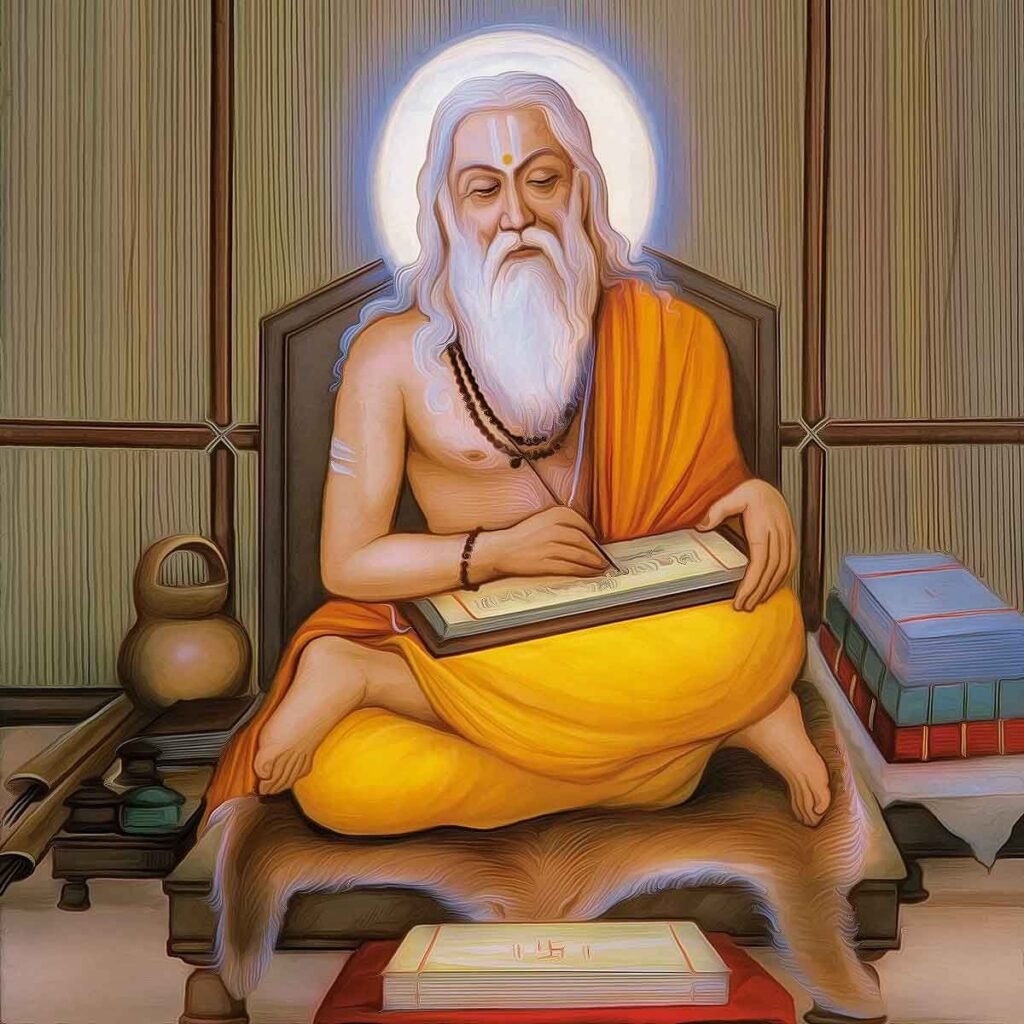Explore Gotras

Hiranyakeshi: A Revered Sage in Hindu Tradition
Sage Hiranyakeshi is a prominent figure in Hindu tradition, known for his contributions to the study of Vedic rituals and Kalpa Sutras (ritual manuals). He is associated with the Hiranyakeshi school of thought, particularly in relation to the Grihya (domestic) and Shrauta (Vedic sacrificial) traditions. His teachings and texts have played a significant role in shaping Hindu rituals and practices, making him an esteemed sage in Vedic literature.
1. Origins and Lineage
- Hiranyakeshi in the Rishi Tradition: He is regarded as a Vedic sage and an expert in ritual sciences, particularly in the Kalpa (ritualistic) tradition.
- Parents: There are limited references to his direct parentage, but he is believed to belong to the lineage of great Vedic scholars who specialized in ritualistic sciences and domestic observances.
- Association with Gotra: While not directly linked to a specific Gotra, he is recognized for his spiritual lineage through the Hiranyakeshi tradition of ritual studies.
2. Hiranyakeshi’s Role in Hindu Mythology
- Hiranyakeshi’s Contributions: He is best known for composing the Hiranyakeshi Grihya Sutra, a vital text in the Kalpa Sutra tradition, which provides detailed instructions on household rituals and ceremonies.
- Stories in Hindu Texts:
- His name is closely associated with the Apastamba Sutras, as the Hiranyakeshi school is considered a branch of the Apastamba tradition.
- He is credited with preserving and systematizing domestic rites (Grihya rituals), sacrificial rites (Shrauta rituals), and ethical codes.
- Stories in Hindu Texts:
- Connection with Other Sages:
- Hiranyakeshi is believed to have been a contemporary or disciple of the great sage Apastamba, as his ritual manuals closely follow the Apastamba tradition.
- His teachings influenced later scholars, helping maintain the continuity of Hindu rituals and sacrificial traditions.
- Connection with Other Sages:
3. Hiranyakeshi’s Contribution to the Vedic Tradition
- Vedic Knowledge and Teachings:
- He played a crucial role in the preservation and refinement of domestic and ritualistic practices, ensuring that household ceremonies and Vedic sacrifices were performed correctly.
- His Grihya Sutra remains an authoritative text on marriage rites, birth rituals, funeral rites, and other domestic samskaras (sacraments).
- Vedic Knowledge and Teachings:
- Teachings on Dharma and Ethics:
- His works emphasize the importance of maintaining ritual purity, following proper procedures in Vedic rites, and upholding family traditions.
- His teachings continue to guide priests, householders, and spiritual practitioners in following the correct method of performing religious ceremonies.
- Teachings on Dharma and Ethics:
4. Hiranyakeshi’s Role in Hindu Tradition
- Role as a Spiritual Guide:
- He was a revered teacher of Vedic rituals, ensuring that sacred traditions were properly transmitted and followed.
- His contributions helped establish standards for domestic worship, sacrifice, and social duties.
- Role as a Spiritual Guide:
- Influence on Later Texts:
- His Grihya Sutra is one of the key texts in Hindu ritual literature, influencing later Hindu traditions and ritualistic commentaries.
- Influence on Later Texts:
5. The Hiranyakeshi School
- Hiranyakeshi Tradition: His name is associated with the Hiranyakeshi school of ritual sciences, which is a significant branch of the Taittiriya Shakha of the Krishna Yajurveda.
- Marital Traditions: Though Gotra rules do not specifically mention Hiranyakeshi, those following his tradition respect the general Vedic lineage principles in marriages and rituals.
6. Hiranyakeshi’s Influence in Hinduism
- Spiritual Legacy: His teachings on ritual precision, household duties, and spiritual discipline remain highly regarded in Vedic traditions.
- Impact on Hindu Thought: His works are studied and followed by priests and scholars, continuing to shape Hindu religious observances.
7. Conclusion
Sage Hiranyakeshi is a highly respected figure in Hindu tradition, known for his contributions to Vedic rituals, household ceremonies, and sacred texts. His legacy is preserved through the Hiranyakeshi Grihya Sutra and its continued use in Hindu religious life, ensuring that Vedic traditions remain intact for future generations.
